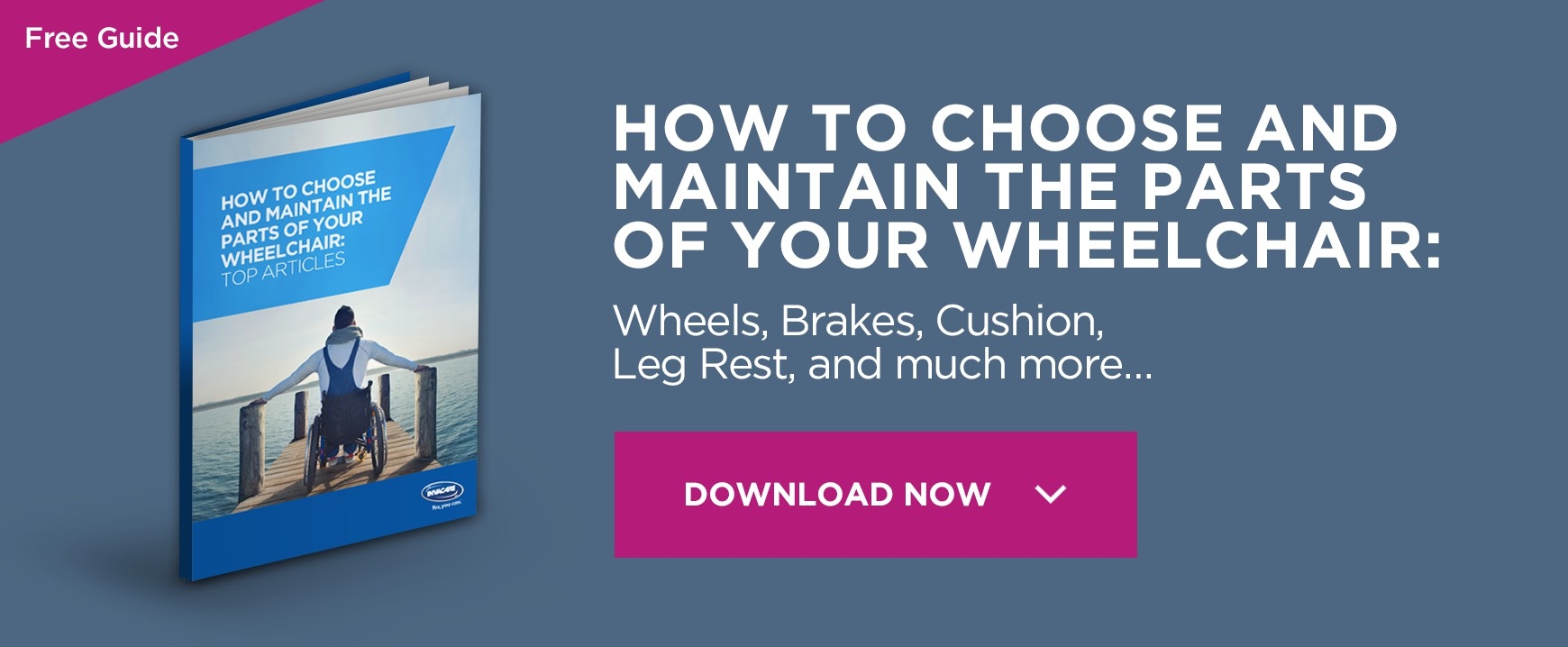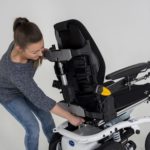3 Tips for Choosing Better Wheelchair Wheels

When configuring your wheelchair, one of the easiest things to overlook is the importance of the kind of wheels you’ll need. The choice you make will mostly depend on where you primarily use your wheelchair, be it indoor or outdoor, plus the terrain and the activity involved. And making the right choice can be crucial.
Someone with a pain condition really needs to limit the amount of vibration, and other users may value speed as part of their sense of independence. Below, we will discuss all the facts and details about wheelchair wheels, tyres and casters you may need to make an informed decision that will undoubtedly make an impact on your day-to-day life. Hopefully, after reading this little manual, that impact will be a positive one.
The smoothness of the ride, speed, manoeuvrability, and control are all related to the wheelchair wheels, tyres and casters, probably more than you think. But choosing these components is not a straightforward task, obviously. So, it’s wise to get an expert, such a therapist or healthcare professional to help you select the combination that meets your lifestyle, performance, maintenance and affordability needs.
1. Wheelchair wheels components and considerations
Manual wheelchairs usually have two sets of wheels:
- A pair in front, called caster or steering wheels;
- And a pair in the back called drive wheels.
Power wheelchairs may have up to three pairs, depending on the type of drive technology:
- One drive pair;
- One or two caster pairs (in case of a centre wheel drive).
Wheelchair rear wheels are made up of a tyre, rim (and hand rim on manual chairs), spokes (or mags), and a hub. The hub is the centre of the wheel, the spokes or mags connect the rim to the hub and the rim is where the tyre is mounted. Hand rims are used for pushing the wheelchair.
Spoke wheels look like bicycle wheels and the spokes are usually made of metal. They usually have 24 or 36 spokes. The spokes can be crossed or radial spoked.
Mag wheels are made of synthetic materials and usually have less than ten spokes.
Rear wheels of manual wheelchairs are normally equipped with quick release axles for easy handling during transportation. Caster wheels are usually fixed mounted on the chair with screwed axles.
Important factors to consider when selecting the appropriate type of wheels for you is their weight, and the environment you will be using them in. Spoke wheels are usually lighter than mag wheels, but they do require more maintenance. They are also less suitable for moist surfaces. Mag wheels are almost maintenance free, but they may be affected by extreme temperatures.
2. Wheel sizes in regard to wheelchair sizes
Wheelchair wheels come in various standardised wheelchair sizes:
- A standard manual adult wheelchair drive wheel size is 24” (approximately 61 cm);
- A standard power wheelchair drive wheel size is 18” (approximately 45,7 cm);
- Caster wheels for manual wheelchairs start from 3” (approximately 7,6 cm), but much more common and practical for everyday use is 4” to 6”.
The wheel size diameter as well as tyre width affects comfort and required effort to move the wheelchair. Therefore, you should select a drive wheel that will allow you to sit comfortably in the chair, and at the same time it should require minimum amount of effort to propel it.
Electric wheelchair drive wheels are smaller, and the tyre is made of stronger and thicker material. You can learn more about Invacare electric wheelchairs on this page.
Alternatively, there is also a way to enjoy effortless power of electric wheelchairs without sacrificing all the benefits of your manual wheelchair. And all it takes is one extra wheel. The Alber e-pilot can transform your standard manual wheelchair into an electronically powered hand bike, capable of speeds of up to 20 kilometres per hour, with an impressive range of 50 kilometres per battery charge.
Alignment and truing
The alignment of the wheels is very important. It affects how the wheelchair rides, its directional stability, the wear on the tyres and the effort required to propel it. You need to consider the following three aspects:
- Camber on rear wheels is the inward or outward tilting of the wheels on their vertical plane. It is used to make propelling the wheelchair easier by getting the hands closer to the body during propulsion. It mostly applies to people who are self-propelling and provides better lateral stability as well as finger protection when passing doors.
- A critical alignment issue is toe-in and toe-out (the off-parallel relationship between the two rear wheels). You should avoid these misalignments, as they will dramatically increase rolling resistance and the wear on the tyres. Also, the directional stability will suffer, especially in case of toe-out.
- Truing (aligning) a wheel is required when a wheel wobbles when spinning on its axis. Mag wheels are trued upon fabrication and remain true unless they are exposed to extreme conditions. Spoke wheels are more vulnerable because various conditions get the spokes distorted. Such problems have to be repaired by a qualified wheel-repair technician.
3. What about tires?
Wheelchair tyres can be pneumatic (air filled), solid and flat free (foam, urethane or rubber filled). Depending on the desired terrain use, they may have anything from a deep profile (like Mountain bike tyres) to a flat profile. As a rule of thumb, you need to know that tyres affect how easily the wheelchair will roll over specific surfaces. The harder the tyre, the easier it will be to propel the wheelchair. The softer the tyre, the harder it will be to propel it. Here are your choices:
- Pneumatic tyres will go flat if punctured and will go soft even without any damage, because the valves will lose air constantly over time, similar to a bicycle tyre, but they have a shock absorbing function when going over kerbs or other obstacles, hence they provide a softer ride on uneven ground. High pressure pneumatic tyres (7 to 10 bar) provide the best ride on flat and even surfaces, because the contact surface to the floor is smaller, hence the driving resistance is low.
- Solid tyres are almost maintenance free and they are unlikely to wear out in the life of the wheelchair, but you’ll be in for bumpier rides. To learn how to fit a solid wheelchair tyre, see the video below. You will have the advantage of a flat free tyre, but on the other hand it can never compare with the good driving performance of a fully pumped high pressure air tyre.
- Flat free tyres are pneumatic tyres that are filled with a semi-solid material. They are not subject to flat tyres and give a softer ride than a solid tyre.
How to Fit Wheelchair Tyres:
Once you’ve bought some new tyres, you’ll need to get them fitted. If you can do it yourself, you’ll save a bit of time, and gain the satisfaction of being able to maintain your wheelchair yourself.
Here’s a video guide to fitting a solid wheelchair wheel:
For more about wheelchair tyres, read our article ‘Wheelchair tyres, options and maintenance’.
Conclusion
There are pros and cons to each type of wheelchair wheel and hopefully, after reading this brief guide, you’ll be able to better decide what works for your specific needs. An average user may not notice all the differences mentioned, but a very active user will. You may need to consider having more than one type of wheels, depending on the use habits and cost. Wheelchair sizes will also be an important factor in the choice, as well as quite a few other more or less technical elements, so you may find this thorough and detailed resource very helpful. Or you may find that you need high performance wheels which are not meant for the average wheelchair user. The sky is your limit, so enjoy the sweet choice that lies ahead.








